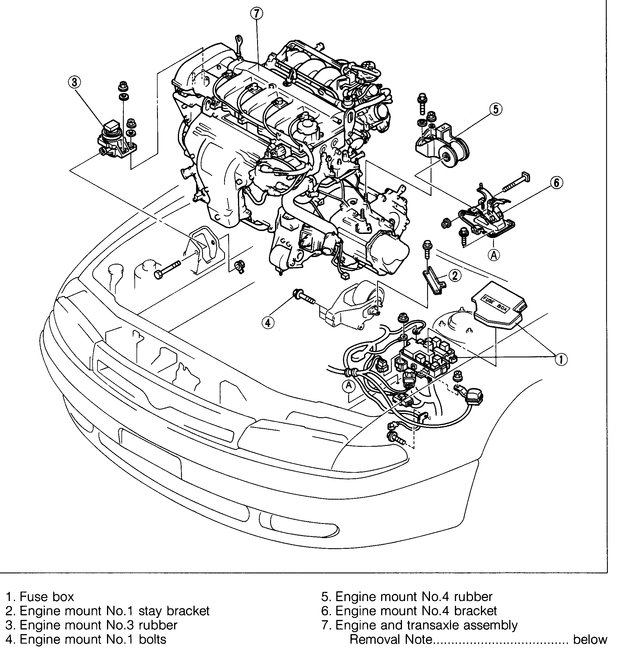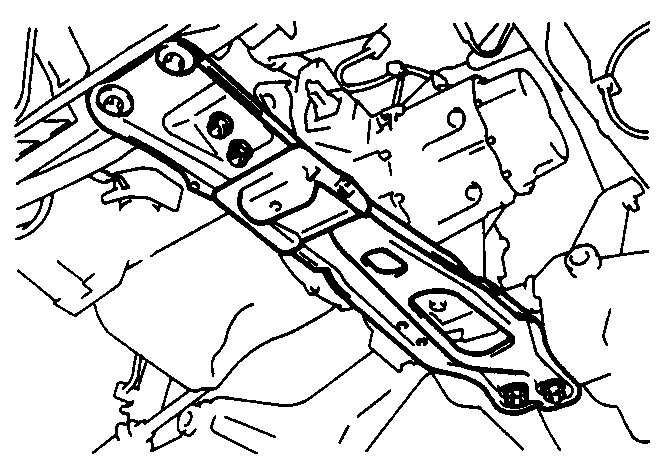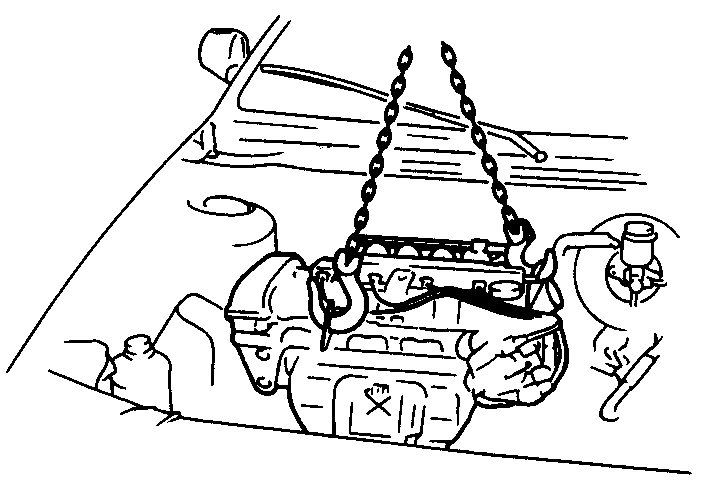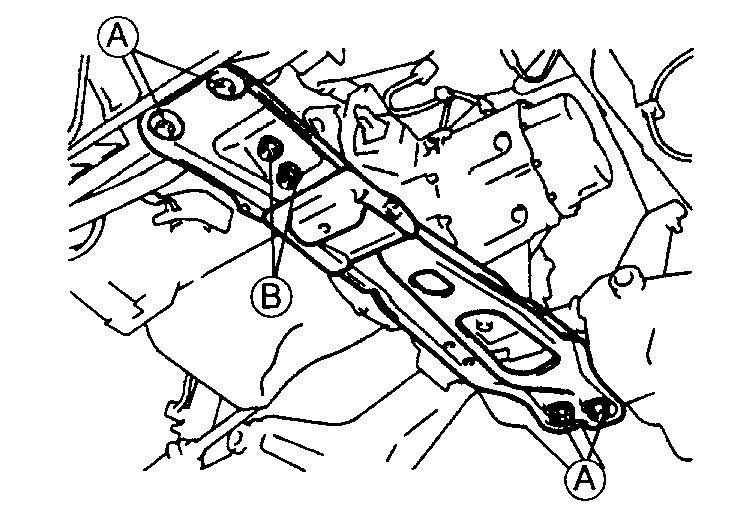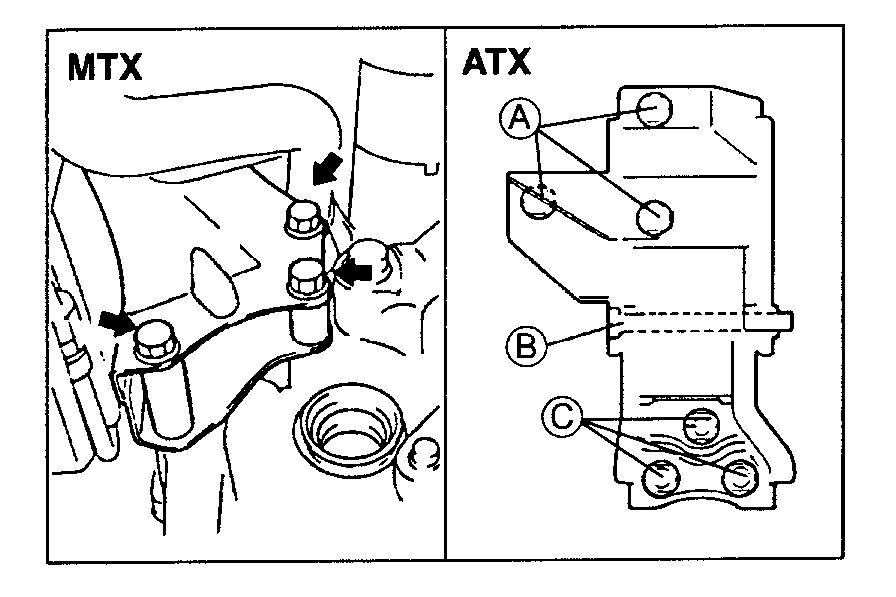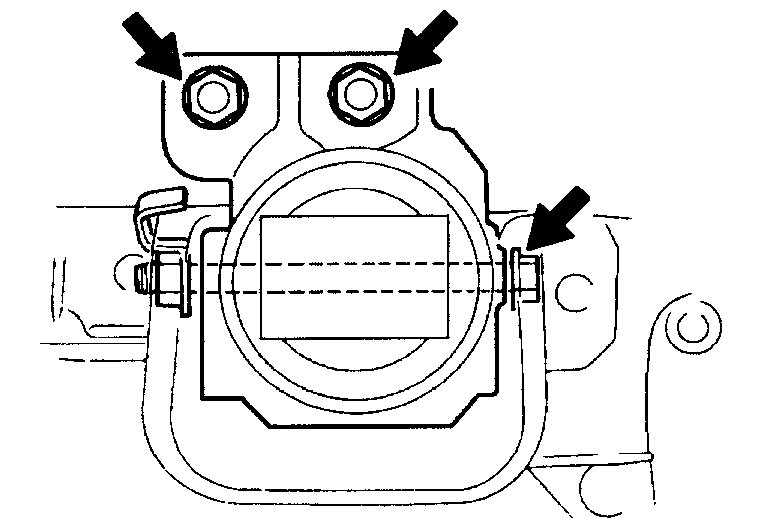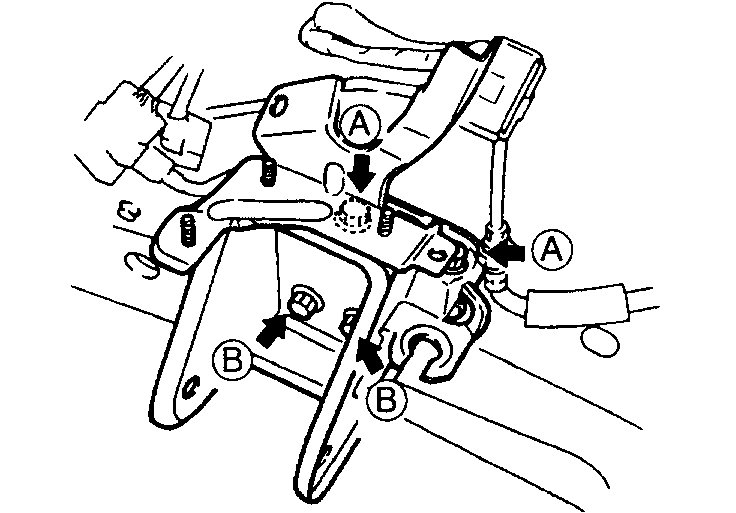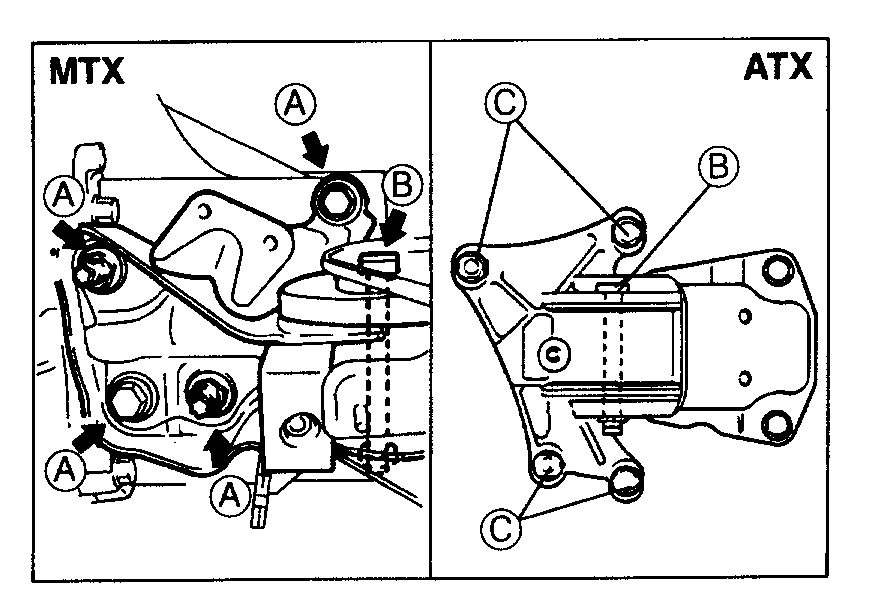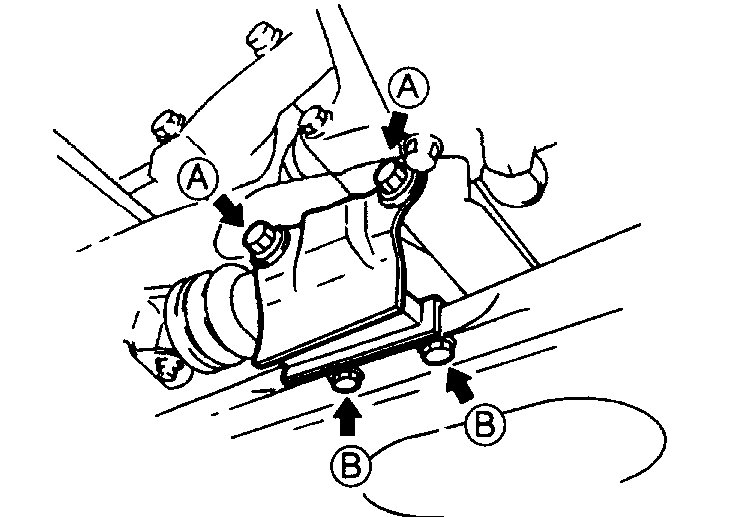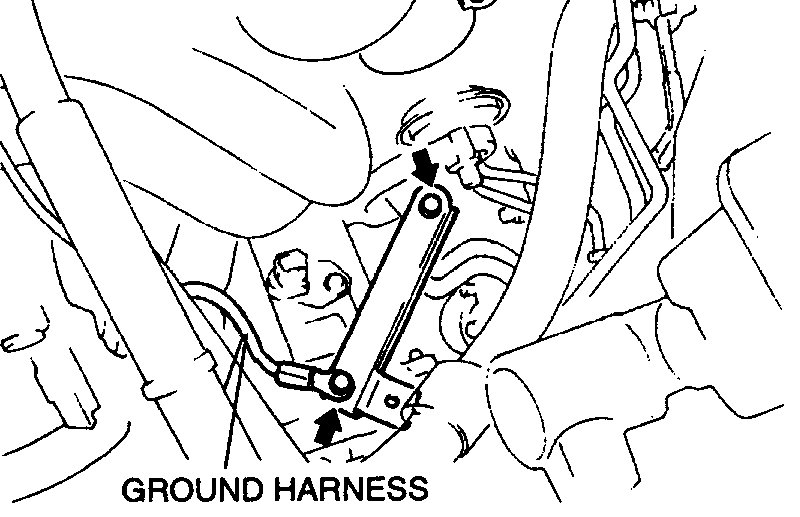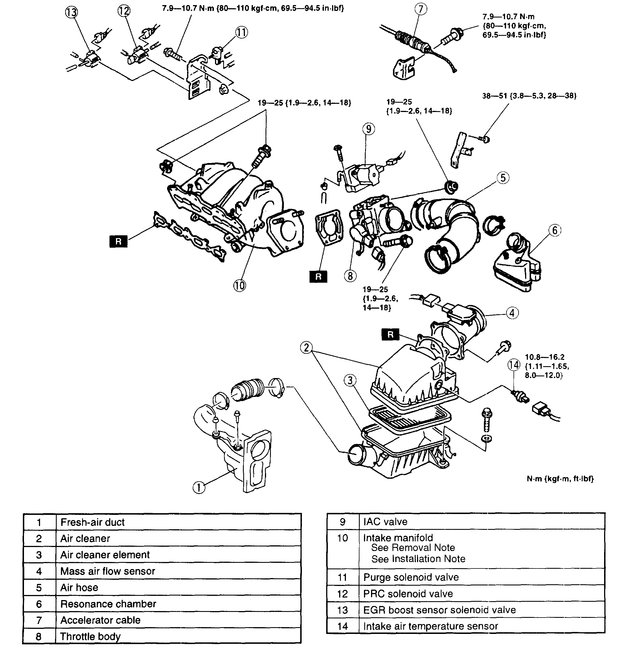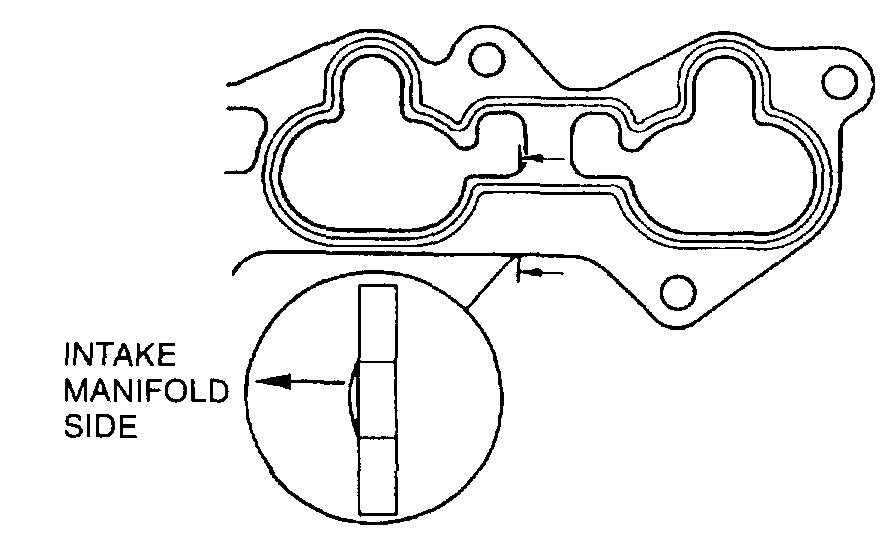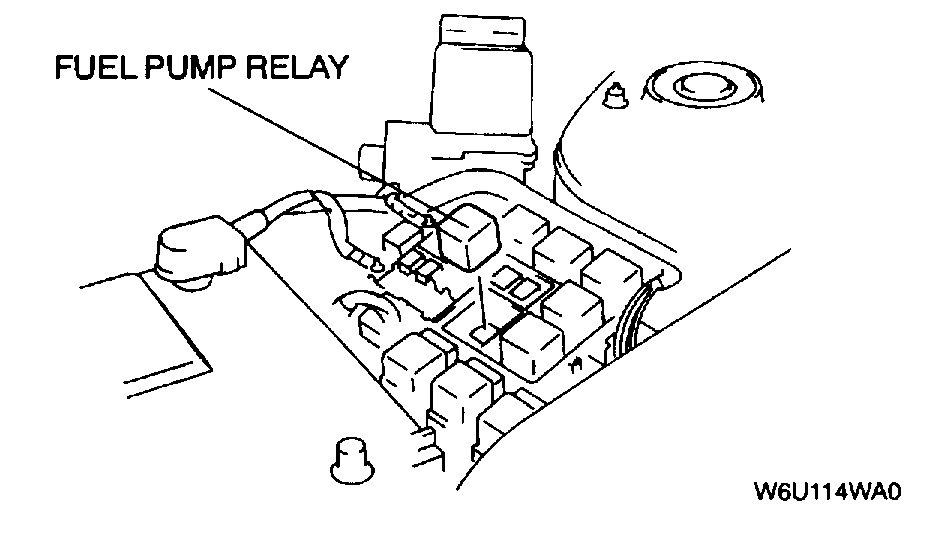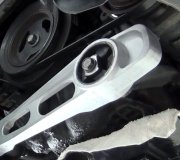Hi,
If you are referring to the one in the rear of the engine, the engine mount cross member needs removed to access it. This requires the engine to be supported via a chain/engine hoist.
Here are the directions I have for replacement. The attached pictures correlate with the directions. I have to be honest, it is somewhat vague, but does describe the correct process.
________________________________________
1998 Mazda 626 DX L4-2.0L DOHC
Removal
Vehicle Engine, Cooling and Exhaust Engine Drive Belts, Mounts, Brackets and Accessories Engine Mount Service and Repair Procedures Removal
REMOVAL
pic 1
pic 2
Engine mount member
Caution
- Support the engine before removing the member.
Pic 3
1. Suspend the engine by using a chain block.
2. Remove the engine mount No.2 nuts.
3. Remove the engine mount member bolts and nuts and remove the engine mount member.
________________________
1998 Mazda 626 DX L4-2.0L DOHC
Installation
Vehicle Engine, Cooling and Exhaust Engine Drive Belts, Mounts, Brackets and Accessories Engine Mount Service and Repair Procedures Installation
INSTALLATION
pic 4
Engine Mount Installation
1. Hand tighten the nuts marked (B). (No 2 engine mount)
2. Install the bolts and nuts shown.
Tightening torque
(A): 67-93 N.M (6.8-9.5 kgf.M, 50-68 ft. Lbf)
pic 5
3. Install the No.1 engine mount mounting bolts.
Tightening torque
MTX: 67-93 Nm (6.8-9.5 kgf.M, 50-68 ft. Lbf)
ATX
(A): 67-104 N.M (6.8-10.7 kgf.M, 50-77.3 ft. Lbf)
(B): 86-116 N.M (8.7-11.9 kgf.M, 63-86.0 ft. Lbf)
(C): 67-93 N.M (6.8-9.5 kgf.M, 50-68 ft. Lbf)
pic 6
4. Install the No.3 engine mount rubber.
Tightening torque
Nut: 74-102 N.M (7.5-10.5 kgf.M, 55-75.9 ft. Lbf)
Bolt: 86-116 N.M (8.7-11.9 kgf.M, 6-6.0 ft. Lbf)
pic 7
5. Install the No.4 engine mount bracket.
6. Hand tighten bolts (B).
7. Tighten bolts (B).
8. Tighten bolts (A).
Tightening torque
(A): 59-80 N.M (6.0-8.2 kgf.M, 44-59 ft. Lbf)
(B): 59-80 N.M (6.0-8.2 kgf.M, 44-59 ft. Lbf)
pic 8
9. Install the No.4 engine mount rubber.
Tightening torque
MTX
(A): 67-93 N.M (6.8-9.5 kgf.M, 50-68 ft. Lbf)
(B): 86-116 Nm (8.7-11.9 kgf.M, 63-86.0 ft. Lbf)
ATX
(C): 38-51 N.M (3.8-5.3 kgf.M, 28-38 ft. Lbf)
10. Remove the chain from the engine hangers.
11. Tighten the No.2 engine mount nuts. (Refer to step 1.)
Tightening torque:
75-104 Nm (7.6-10.7 kgf.M, 55-77.3 ft. Lbf)
pic 9
12. Tighten the No.2 engine mount rubber through bolt.
Tightening torque:
86-116 Nm (8.7-11.9 kgf.M, 63-86.0 ft. Lbf)
13. Install the No.5 engine mount rubber as shown.
Tightening torque
(A): 55-80 Nm (5.6-8.2 kgf.M, 41-59 ft. Lbf)
(B): 44-60 Nm (4.4-6.2 kgf.M, 32-44 ft. Lbf)
pic 10
14. Install the No.1 engine mount stay bracket and ground harness (MTX).
Tightening torque:
6.9-9.8 N.M (70-100 kgf. Cm, 61-86.8 in. Lbf)
____________________________________
Let me know if this helps or if you have other questions.
Take care,
Joe
Images (Click to make bigger)
Friday, April 24th, 2020 AT 9:29 PM
